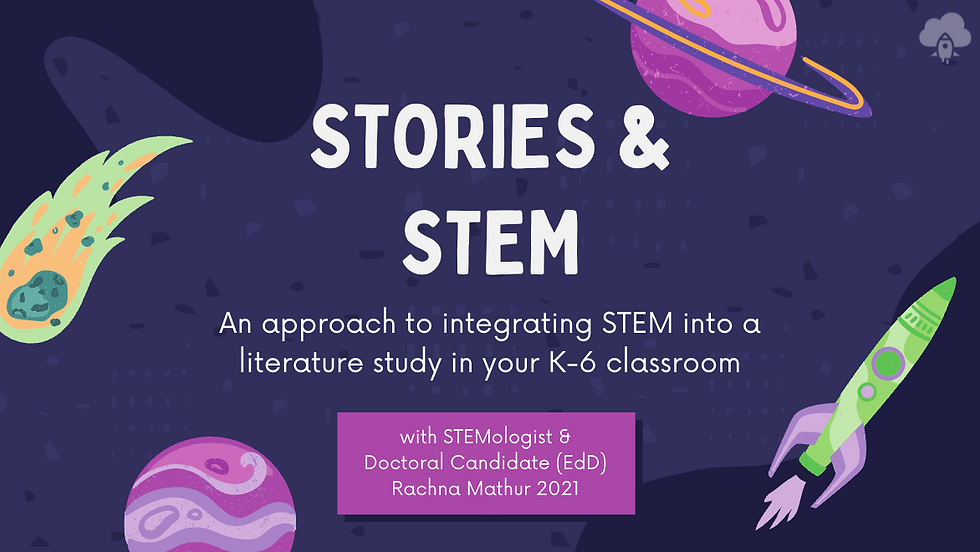Once upon a time...there was a brilliant elementary educator and a classroom full of eager-to-learn pupils. There were so many amazing lessons on math, social science, art, music, sciences, reading, writing, physical education, and the list goes on but not enough time to fit it all into the day or the week or the year! Most of the teacher's time was spent in reading and writing activities, how could they POSSIBLY fit in additional STEM lessons or any at all?
One day, while scrolling through every Pinterest board and blog article on STEM, the elementary teacher chanced upon STEMology Club's programs on "Stories and STEM" and voilà, they found a few ideas on how they could teach STEM alongside a STEM-themed book study!
So while my story above is completely fictional, I hope you might be a teacher, school staff member, or a parent interested in incorporating additional STEM activities in your at-home or school classrooms! Check out my "Stories & STEM" presentation I did for the SciTech Institute's 2021 STEM & Innovation Summit with a little information on:
STEMology Club and what we do
Tips on how to pick a STEM-themed book
Using "The Wild Robot" by Peter Brown
Our "Books N Bots©" program based on this book*
Free resources to start your own "LitSTEM" study
*Shoutout & credit to Mrs. Alisa Johnson elementary gifted educator, culturally sensitive teaching consultant, all around brilliant human being and dear friend. She and I created "Books N Bots©" together and she is my inspiration in the "Stories and STEM" series!
Why Stories & STEM?
It can be challenging to find the time in a regular school day to incorporate "integrative STEM" activities, that is, projects that span multiple STEM topics collectively as opposed to each discipline on its own, when the majority of time in K-6 is spent on reading.
The National Assessment of Educational Progress (NAEP) analyzes U.S. students performance across a variety of subjects including reading. In 2019, their study revealed that 65% of 4th-graders performed below the NAEP Proficient level in reading. What does that mean? There are 3 levels: Basic, Proficient, and Advanced and they pretty much reflect a level of reading that the words mean, with Proficient referring to the level that most teachers would like to strive for their students to be at or above.
Well its no wonder why teachers are strapped for time! They are dealing with limited time, limited resources, meeting the standards set for public schooling, and making sure their students are proficient in reading.
The National Survey of Science & Mathematics Education (NSSME+) conducted a study in 2018 that found that K-6 teachers spend 3-4 times the amount of time in english language arts (ELA) than in science. In fact, their largest portion of time spent across reading, mathematics, science, and social studies was in reading.
So coming to my question, why Stories and STEM? Given the attention required for reading in elementary years and the lack of time, integrating even a few STEM activities that are connected with a STEM-themed book, like "The Wild Robot" would fulfill both requirements and most importantly, allow for teachers to continue to improve reading proficiency to meet or surpass national standards.
If you have any questions, feel free to reach out or leave me a comment on what you think! rachna@stemology.club


Comments